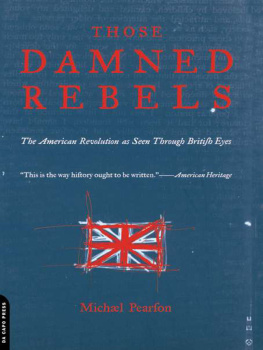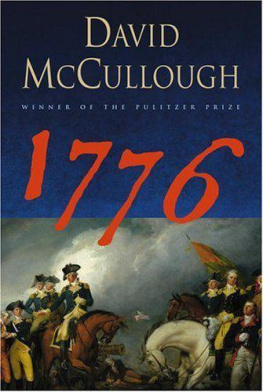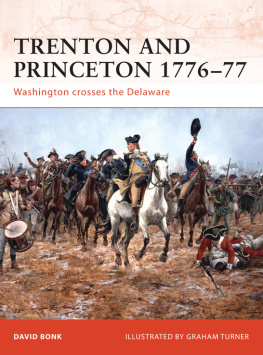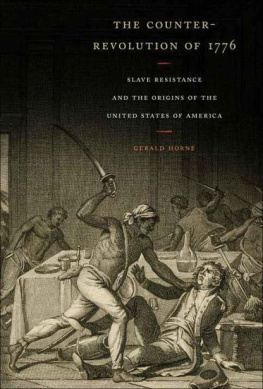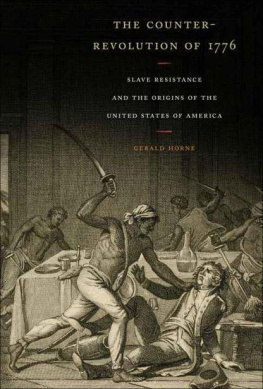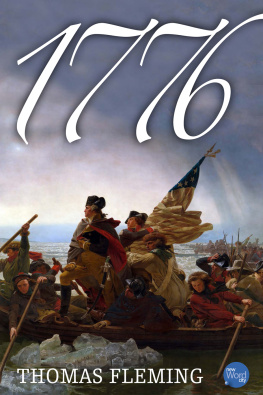The Great New York Fire of 1776
The Great New York Fire of 1776
The Great New York Fire of 1776
A Lost Story of the American Revolution
BENJAMIN L. CARP

I N T R O D U C T I O N
Was It Just the Wind?
N ew York City was the most important spot on the map in 1776. The British thought it was vital to retake it, and the American rebels strained to defend it. General William Howe drove the rebels from Staten Island, Long Island, and lower Manhattan, with the help of one of the largest amphibious assault forces in history up to that time. The British hoped that a decisive victory in New York would end the rebellion. Then, six days after the British took New York City, more than a fifth of it burned to the ground on September 21. The fire crippled a city that was the focal point of the 1776 campaign just weeks after the United States declared its independence. This was New York Citys first great fire.
In the summer of 1776, the rebels rapidly came to understand that they could not successfully defend New York without losing a significant portion of their fighting force. They evacuated the city, and they did not quite leave it intact. As the fire raged, almost everyone at the scene believed that the rebels had lit the spark deliberately. The incendiaries may have begun with specific targets, but the fire quickly became indiscriminate, destroying the homes of friends as well as foes. The British troops and their Loyalist supporters reacted to the fire with horror. British soldiers and sailors executed a few suspected incendiaries on the spot. Outside the city, Americans werent sure what to think.
For months before the fire, many people had predicted that New York City was doomed, because it was too important to British success, but too difficult for the rebels to defend. The rumors sounded certain that the rebels would sooner burn New York than leave it for the British. When the redcoats arrived on September 15, they found combustible materials, which they assumed had been prepared to set fire to the city. That day, the troops extinguished a small blaze and found a trail of gunpowder leading away from it. John Baltus Dash, the fire chief, buried his valuables to keep them safe from a conflagration he knew was coming. He wasnt the only one.
Who had set the Great Fire of 1776, and why? Were they mischief-makers with no political motivation? The British soldiers or sailors themselves? Civilians who supported the rebellion? Saboteurs with orders from the Continental Army? The fire appears to have been the intentional work of perpetrators with political motivationsthe more radical elements of the rebel coalition. Witnesses spoke of the fire being set by white men from across the Northeast along with women and at least one mixed-race man. They acted either of their own volition or under orders from a commanding officer. Perhaps George Washington himself gave the command.
In 1776, many Americans allegiances were not yet fixed, and European powers had not yet committed themselves to joining a fight against the British. Both sides, therefore, were trying to convince the world that they were fighting a just war. What would people say of the American rebellion now? If the fire was deliberate, then it would be harder to call the rebellion morally righteous. Rebel politicians and newspaper publishers worked furiously, therefore, to convince the public that the fire was an accident, and not worth dwelling on. They did their best to make the story disappear, leaving the British frustrated at their failure to influence public opinion, and showing the Loyalists how little room they had to express their grievances.
Fire and mayhem were undeniable features of the Revolution that its earliest chroniclers were eager to suppress. The nations founders dismissed the fire as an accident, cast doubt on the evidence, and exonerated Washington from suspicion.had given the order to burn New York City. The evidence is ambiguous, as it is in most arson cases: it is too late to question eyewitnesses, and we have little forensic evidence, no clear confessions, no trial record, or any other type of documentation that might lead to the absolute truth. The Anglo-American legal standard to protect an accused criminal is beyond all reasonable doubt, but that is not the standard of proof for historians, who must use the imperfect evidence at their disposal to try their best to get at the truth of the past, given what they know about the broader historical context.
Even if the fire was an accident, as the rebels claimed, the Great Fire of 1776 reveals the mayhem and instability that accompanied the creation of the United States. It was a noteworthy disaster followed by a handful of misguided murders. The fire reveals the volatile conditions of New York City and the hundreds of people who were displaced by having their homes reduced to ash. Crowding plagued the citys British garrison for the rest of the war. New Yorkersboth renters and property ownerscomplained about the lasting displacement and loss they had suffered. They lived in fear of new fire scares.
This book seeks to resolve the conflicting stories about the Great Fire of New York. The Great Fire challenges and changes the story of 76 to reflect the chaos and uncertainty that people experienced on the ground. It expands the story to include ordinary soldiers and civilians from a variety of backgrounds, as well as rebels, Loyalists, and those in between. It shows the rumors and lies that people told themselves amid the carnage and wreckage that the war had wrought. The American cause looks very different if we acknowledge some of its most unsavory features. And it looks very different if we put New York City at the center of the Revolution, because New Yorks story was one of civil violence, fire, and military occupation. In the wake of the Revolutionary War, New York City emerged as an immortal metropolis, years before it surpassed Philadelphias population and decades before it became one of the worlds largest and most influential cities. New York had risen from the ashes, but only by forgetting the flames of war.
After the battles of Lexington and Concord, thousands of American colonists channeled their political resistance into military enthusiasm
Americans and their admirers usually understand 1776 as a year of bold words. Rebellious colonists listed their grievances, declared their desire for separation, and, finally, affixed their names. They pledged to one another, took oaths before a candid world, and trusted that God blessed their intentions. But New York City in September 1776 was a chaos zone: people were traumatized and ready to do violence, struggling to comprehend the changes around them, unmoored from civility and propriety. The year that Americans declared their independence was transitional, chaotic, and uncertain in ways that are not easy to resolve. Although many Americans traditionally read backward from later celebrations of patriotic unity and the common cause, the year 1776 was wracked with uncertainty and rife with disruptive violence.
The Great Fire of 1776 was a nameless deed, with authors but no signatures, grievances but no declarations. Historians will probably never know whether a group of incendiaries took votes, made pledges, or received a benediction. The British had faced many uprisings in the eighteenth century: slave rebellions and indigenous resistance throughout North America and the Caribbean, the Stamp Act riots of 1765, the Gaspe riot of 1772, and the Boston Tea Party of 1773. After incidents like these, British authorities were desperate to find the culprits: to uncover names, to hold someone accountable. If they could make an example of individual rebels, they could restore order and allegiance. During the Revolution, Loyalists argued that envy and malice had led an ambitious cabal of agitators to overthrow the British government and spread
Next page

